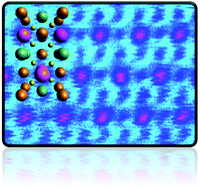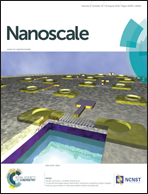Observation of antisite domain boundaries in Cu2ZnSnS4 by atomic-resolution transmission electron microscopy†
Abstract
Atomic resolution transmission electron microscopy has been used to examine antisite defects in Cu2ZnSnS4 (CZTS) kesterite crystals grown by a hot injection method. High angle annular dark field (HAADF) imaging at sub-0.1 nm resolution, and lower magnification dark field imaging using reflections sensitive to cation ordering, are used to reveal antisite domain boundaries (ADBs). These boundaries, typically 5–20 nm apart, and extending distances of 100 nm or more into the crystals, lie on a variety of planes and have displacements of the type ½[110] or ¼[201], which translate Sn, Cu and Zn cations into antisite positions. It is shown that some ADBs describe a change in the local stoichiometry by removing planes of S and either Cu or Zn atoms, implying that these boundaries can be electrically charged. The observations also showed a marked increase in cation disorder in regions within 1–2 nm of the grain surfaces suggesting that growth of the ordered crystal takes place at the interface with a disordered shell. It is estimated that the ADBs contribute on average ∼0.1 antisite defect pairs per unit cell. Although this is up to an order of magnitude less than the highest antisite defect densities reported, the presence of high densities of ADBs that may be charged suggests these defects may have a significant influence on the efficiency of CZTS solar cells.


 Please wait while we load your content...
Please wait while we load your content...